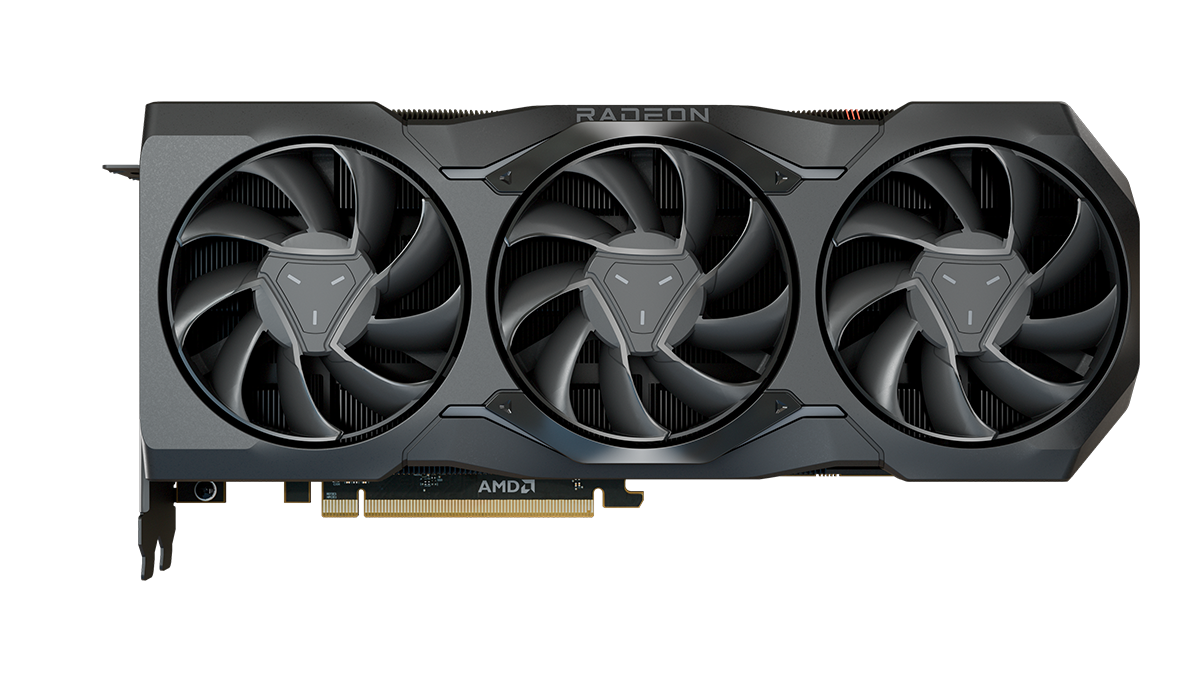Keeping Your GPU Cool and Quiet
Limiting the frame rate not only saves power, but also reduces heat and noise, keeping your GPU cool and quiet.
Power draw and efficiency is important to gamers. Frame Rate Target Control (FRTC) is a feature which enables users to set a target maximum frame rate when playing an application in full screen mode. FRTC can reduce GPU power consumption (great for games running at frame rates much higher than the display refresh rate) and help create cooler and quieter gaming.
Frame Rate Target Control caps performance not only in 3D rendered in-game scenes, but also in splash screens, loading screens and menus, where frame rates can often run needlessly into the hundreds of fps. Users might wish to set a very high cap just to limit wasteful fps like that seen in menus and such, while still taking advantage of the responsiveness given by fps well beyond 60.
FRTC is especially useful when rendering relatively ‘easy’ content on powerful hardware, e.g. when you’ve got a relatively low resolution monitor connected to a higher end graphics board, or when playing an older title, or a game with a relatively lightweight graphics load.

Get the Most Out of Your Graphics
Changes to the Frame rate target must be done outside of the game, i.e. exit the game completely, make your changes, and then start the game again.
The current implementation of Frame Rate Target Control works with DirectX® 9, DirectX® 10 and DirectX® 11, DirectX® 12, and Vulkan titles, and offers targets in the range of 30 to 200 fps, in full-screen exclusive mode.
Footnotes
DISCLAIMER
The information contained herein is for informational purposes only, and is subject to change without notice. While every precaution has been taken in the preparation of this information, it may contain technical inaccuracies, omissions and typographical errors, and AMD is under no obligation to update or otherwise correct this information. Advanced Micro Devices, Inc. makes no representations or warranties with respect to the accuracy or completeness of the contents of this document, and assumes no liability of any kind, including the implied warranties of noninfringement, merchantability or fitness for particular purposes, with respect to the operation or use of AMD hardware, software or other products described herein. No license, including implied or arising by estoppel, to any intellectual property rights is granted by this document. Terms and limitations applicable to the purchase or use of AMD’s products are as set forth in a signed agreement between the parties or in AMD's Standard Terms and Conditions of Sale.
AMD, the AMD Arrow logo, Catalyst, Radeon, and combinations thereof are trademarks of Advanced Micro Devices, Inc. DirectX and Windows are registered trademarks of Microsoft Corporation in the US and other jurisdictions. Other product names used in this publication are for identification purposes only and may be trademarks of their respective companies.
DISCLAIMER
The information contained herein is for informational purposes only, and is subject to change without notice. While every precaution has been taken in the preparation of this information, it may contain technical inaccuracies, omissions and typographical errors, and AMD is under no obligation to update or otherwise correct this information. Advanced Micro Devices, Inc. makes no representations or warranties with respect to the accuracy or completeness of the contents of this document, and assumes no liability of any kind, including the implied warranties of noninfringement, merchantability or fitness for particular purposes, with respect to the operation or use of AMD hardware, software or other products described herein. No license, including implied or arising by estoppel, to any intellectual property rights is granted by this document. Terms and limitations applicable to the purchase or use of AMD’s products are as set forth in a signed agreement between the parties or in AMD's Standard Terms and Conditions of Sale.
AMD, the AMD Arrow logo, Catalyst, Radeon, and combinations thereof are trademarks of Advanced Micro Devices, Inc. DirectX and Windows are registered trademarks of Microsoft Corporation in the US and other jurisdictions. Other product names used in this publication are for identification purposes only and may be trademarks of their respective companies.

